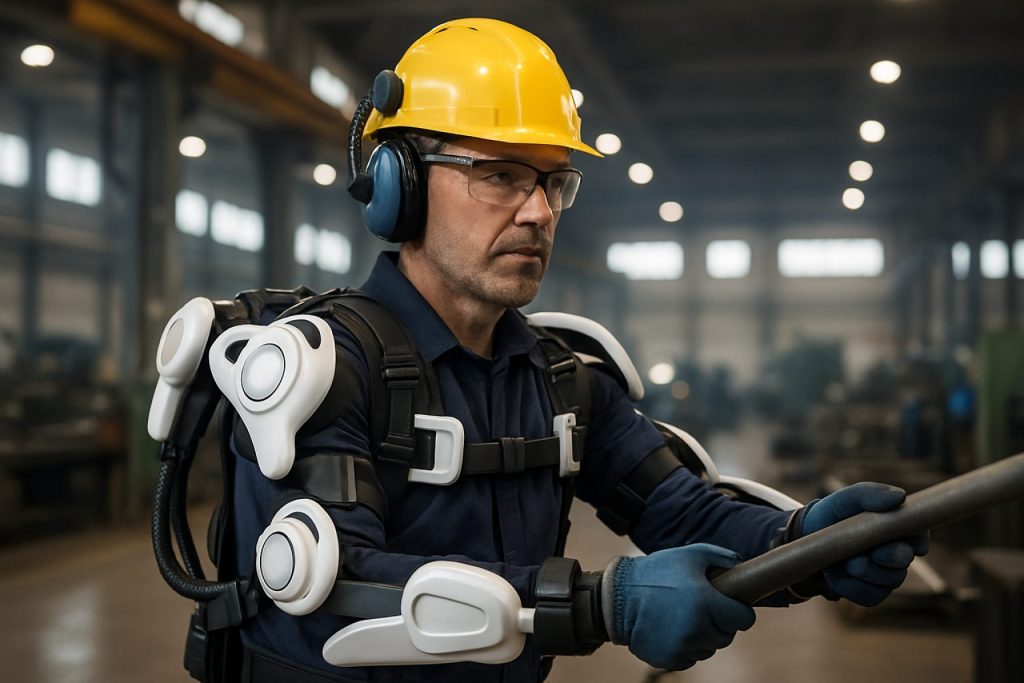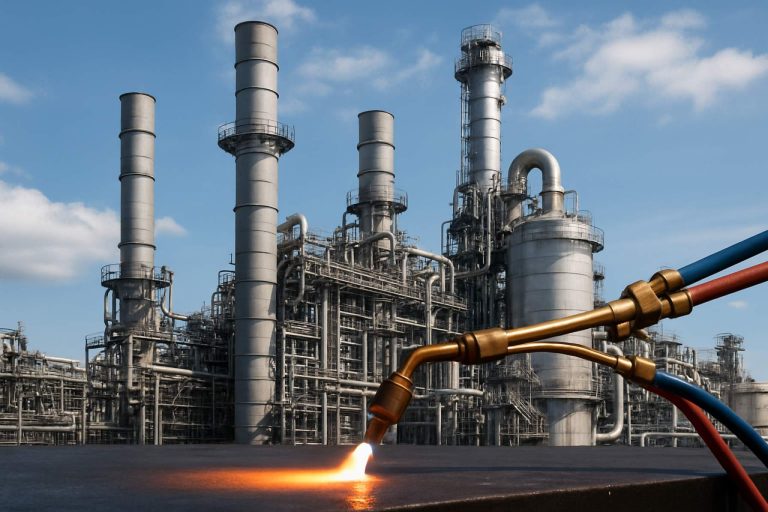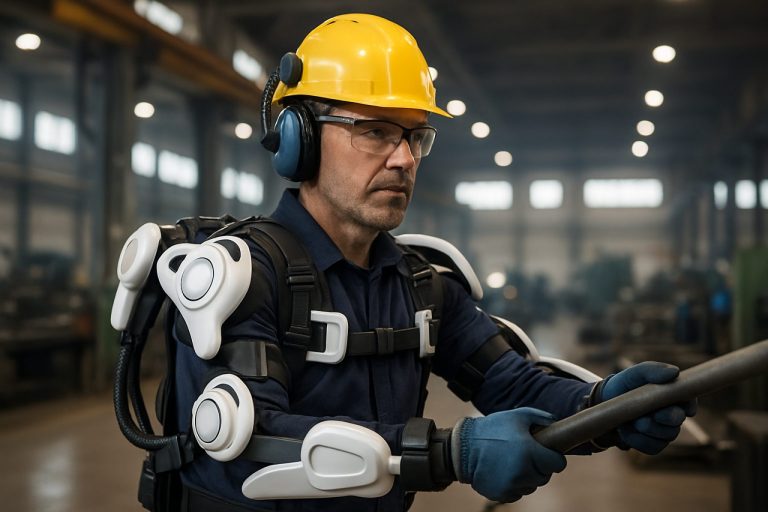
2025 Exoskeleton Robotics for Industrial Workforce Augmentation: Market Dynamics, Growth Projections, and Strategic Insights. Explore Key Trends, Regional Leaders, and Opportunities Shaping the Next Five Years.
- Executive Summary & Market Overview
- Key Technology Trends in Industrial Exoskeleton Robotics
- Competitive Landscape and Leading Players
- Market Growth Forecasts (2025–2030): CAGR, Revenue, and Adoption Rates
- Regional Analysis: North America, Europe, Asia-Pacific, and Rest of World
- Challenges, Risks, and Barriers to Adoption
- Opportunities and Strategic Recommendations
- Future Outlook: Innovations and Market Evolution
- Sources & References
Executive Summary & Market Overview
The exoskeleton robotics market for industrial workforce augmentation is poised for significant growth in 2025, driven by increasing demand for ergonomic solutions, productivity enhancement, and workplace injury reduction. Exoskeletons—wearable robotic systems designed to support, augment, or enhance human physical capabilities—are being rapidly adopted across sectors such as manufacturing, logistics, construction, and warehousing. These devices help workers lift heavy loads, reduce fatigue, and minimize musculoskeletal disorders, which are among the leading causes of lost workdays and compensation claims globally.
According to IDTechEx, the global exoskeleton market is projected to surpass $2.5 billion by 2025, with industrial applications accounting for a substantial share of this growth. The adoption is particularly strong in regions with high labor costs and stringent occupational safety regulations, such as North America, Western Europe, and parts of Asia-Pacific. Key drivers include the aging workforce, the need to retain experienced employees, and the push for automation that complements rather than replaces human labor.
Major industry players such as Hilti Group, SuitX (a subsidiary of Ottobock), and Sarcos Technology and Robotics Corporation are investing heavily in R&D to develop lighter, more affordable, and user-friendly exoskeletons tailored for industrial environments. These advancements are making exoskeletons more accessible to small and medium-sized enterprises, not just large corporations.
The market is also witnessing increased collaboration between robotics manufacturers and end-user industries to customize solutions for specific tasks, such as overhead work, repetitive lifting, and extended standing. For example, Ford Motor Company has partnered with exoskeleton providers to deploy wearable robotics in its assembly lines, reporting reductions in worker fatigue and injury rates.
Despite the positive outlook, challenges remain, including high initial costs, integration with existing workflows, and the need for regulatory clarity. However, as technology matures and economies of scale are realized, the total cost of ownership is expected to decrease, further accelerating adoption. In summary, 2025 is set to be a pivotal year for exoskeleton robotics in industrial workforce augmentation, with robust growth prospects and expanding real-world deployments.
Key Technology Trends in Industrial Exoskeleton Robotics
Exoskeleton robotics for industrial workforce augmentation are rapidly transforming the landscape of manufacturing, logistics, and construction by enhancing human capabilities and reducing workplace injuries. In 2025, several key technology trends are shaping the adoption and evolution of these systems.
- Lightweight Materials and Ergonomic Design: Advances in materials science have led to the development of exoskeletons that are lighter, more comfortable, and less intrusive. The use of carbon fiber composites and high-strength polymers has enabled manufacturers to reduce device weight while maintaining durability and support. Ergonomic improvements, such as adjustable fittings and modular components, are making exoskeletons more adaptable to diverse body types and industrial tasks (Fraunhofer-Gesellschaft).
- Integration of AI and Smart Sensors: The incorporation of artificial intelligence and advanced sensor arrays is enabling exoskeletons to provide real-time feedback, adapt to user movements, and optimize assistance levels. These smart systems can monitor posture, detect fatigue, and adjust support dynamically, improving both safety and productivity. Predictive maintenance features, powered by AI, are also reducing downtime and operational costs (ABB).
- Collaborative Human-Robot Interaction: Exoskeletons are increasingly designed to work seamlessly alongside other automation technologies, such as collaborative robots (cobots) and automated guided vehicles (AGVs). This integration is fostering safer, more efficient workflows, particularly in environments where full automation is not feasible or cost-effective (Bosch Rexroth).
- Data-Driven Workforce Analytics: Modern exoskeletons are equipped with connectivity features that allow for the collection and analysis of usage data. This data is being leveraged to optimize workforce deployment, identify training needs, and inform ergonomic interventions, contributing to a measurable reduction in musculoskeletal disorders and absenteeism (Owasys).
- Customization and Task-Specific Solutions: The market is witnessing a shift from one-size-fits-all exoskeletons to highly specialized devices tailored for specific tasks, such as overhead work, heavy lifting, or repetitive assembly. This trend is driving higher adoption rates as companies can now select solutions that directly address their unique operational challenges (SuitX).
These technology trends are collectively accelerating the deployment of exoskeleton robotics across industrial sectors, with a focus on augmenting human performance, improving safety, and driving operational efficiency.
Competitive Landscape and Leading Players
The competitive landscape for exoskeleton robotics in industrial workforce augmentation is rapidly evolving, driven by increasing demand for ergonomic solutions that enhance worker productivity and safety. As of 2025, the market is characterized by a mix of established robotics firms, specialized exoskeleton developers, and new entrants leveraging advancements in materials science, artificial intelligence, and sensor technology.
Key players in this sector include SuitX (now part of Ottobock), Sarcos Technology and Robotics Corporation, Honda Motor Co., Ltd., Ekso Bionics Holdings, Inc., and Daiwa House Industry Co., Ltd.. These companies are at the forefront of developing powered and passive exoskeletons tailored for industrial applications such as logistics, manufacturing, and construction.
In 2025, Sarcos continues to lead with its Guardian XO full-body, battery-powered exoskeleton, which is being piloted by major logistics and manufacturing firms for heavy lifting and repetitive tasks. Ekso Bionics has expanded its industrial product line, focusing on upper-body exoskeletons that reduce musculoskeletal injuries among assembly line workers. SuitX, under Ottobock, is leveraging its medical exoskeleton expertise to refine industrial models, emphasizing lightweight designs and user comfort.
Asian manufacturers, notably Honda and Daiwa House, are intensifying competition by introducing cost-effective, scalable exoskeletons for the construction and warehousing sectors. Their focus on modularity and ease of integration with existing workflows is gaining traction, particularly in markets with aging workforces.
The competitive environment is further shaped by strategic partnerships between exoskeleton developers and industrial giants such as Ford Motor Company and Boeing, which are investing in pilot programs and co-development initiatives to tailor exoskeleton solutions to specific operational needs. Additionally, startups and university spin-offs are entering the market with niche innovations, such as AI-driven adaptive support and cloud-based performance analytics.
Overall, the 2025 market is marked by rapid product iteration, increasing adoption rates, and a clear trend toward collaborative development between technology providers and end-users, setting the stage for broader industrial deployment in the coming years.
Market Growth Forecasts (2025–2030): CAGR, Revenue, and Adoption Rates
The global market for exoskeleton robotics aimed at industrial workforce augmentation is poised for robust growth between 2025 and 2030. According to projections by MarketsandMarkets, the industrial exoskeleton segment is expected to register a compound annual growth rate (CAGR) exceeding 40% during this period, outpacing the broader exoskeleton market. This surge is driven by increasing adoption in manufacturing, logistics, automotive, and construction sectors, where ergonomic injuries and productivity bottlenecks are critical concerns.
Revenue forecasts indicate that the industrial exoskeleton market will surpass $1.2 billion by 2030, up from an estimated $250 million in 2025. This growth trajectory is underpinned by rising investments from major industry players such as Honeywell, SuitX (now part of Ottobock), and Sarcos Robotics, who are accelerating product development and deployment. The Asia-Pacific region, particularly China, Japan, and South Korea, is anticipated to witness the fastest adoption rates, fueled by government initiatives to enhance workplace safety and address labor shortages.
Adoption rates are expected to climb steadily, with penetration in large-scale manufacturing facilities projected to reach 8–10% by 2030, compared to less than 2% in 2025. Early adopters are primarily in automotive assembly lines and heavy logistics, where exoskeletons are already demonstrating measurable reductions in musculoskeletal injuries and improvements in worker productivity. The integration of AI-driven adaptive controls and lightweight materials is further lowering barriers to adoption, making exoskeletons more accessible for mid-sized enterprises.
Key growth drivers include stricter occupational health regulations, the aging industrial workforce, and the need for operational efficiency in high-volume production environments. However, market expansion may be tempered by high upfront costs and the need for comprehensive worker training programs. Nonetheless, as exoskeleton technology matures and economies of scale are realized, unit costs are expected to decline, further accelerating market penetration through 2030.
Regional Analysis: North America, Europe, Asia-Pacific, and Rest of World
The global market for exoskeleton robotics aimed at industrial workforce augmentation is experiencing differentiated growth across regions, driven by varying levels of technological adoption, regulatory frameworks, and industrial automation priorities. In 2025, North America, Europe, Asia-Pacific, and the Rest of the World (RoW) each present unique dynamics shaping the deployment and commercialization of exoskeleton solutions.
North America remains a frontrunner, propelled by robust investments in advanced manufacturing and workplace safety. The United States, in particular, benefits from strong R&D ecosystems and early adoption by automotive, aerospace, and logistics sectors. Companies such as Sarcos Technology and Robotics Corporation and SuitX are expanding pilot programs and commercial deployments, supported by favorable OSHA guidelines and a focus on reducing musculoskeletal injuries. The region’s market is further buoyed by government grants and partnerships with major industrial players.
Europe is characterized by stringent worker safety regulations and a proactive approach to ergonomic innovation. Countries like Germany, France, and the Netherlands are leading adopters, with automotive giants and logistics firms integrating exoskeletons to address labor shortages and comply with EU directives on workplace health. The presence of companies such as Ottobock and Hocoma underscores the region’s focus on both industrial and medical-grade exoskeletons. The European market is also shaped by collaborative research initiatives and public-private partnerships.
- Asia-Pacific is witnessing the fastest growth, driven by rapid industrialization and a large manufacturing workforce. Japan and South Korea are at the forefront, with firms like CYBERDYNE Inc. and Daewoon Robotics pioneering exoskeleton integration in electronics, automotive, and heavy industries. China is emerging as a significant market, leveraging government incentives and a focus on smart manufacturing under the “Made in China 2025” initiative. The region’s growth is also supported by a rising emphasis on worker safety and productivity.
- Rest of the World (RoW) includes Latin America, the Middle East, and Africa, where adoption is nascent but growing. Industrial hubs in Brazil and the UAE are exploring exoskeletons for logistics and construction, often through pilot projects and collaborations with global vendors. Market expansion in these regions is contingent on economic conditions, awareness, and the pace of industrial modernization.
Overall, regional disparities in regulatory support, industrial automation, and workforce demographics will continue to shape the exoskeleton robotics market landscape in 2025, with Asia-Pacific expected to outpace other regions in terms of growth rate, while North America and Europe maintain leadership in innovation and deployment scale.
Challenges, Risks, and Barriers to Adoption
The adoption of exoskeleton robotics for industrial workforce augmentation faces several significant challenges, risks, and barriers as of 2025. Despite the promise of enhanced worker safety, productivity, and ergonomics, the path to widespread implementation is complex.
- High Initial Costs and ROI Uncertainty: The upfront investment required for industrial exoskeletons remains substantial, with unit prices often ranging from $5,000 to $45,000 depending on the type and sophistication. Many companies, especially small and medium-sized enterprises (SMEs), are hesitant to commit capital without clear, short-term return on investment (ROI) data. The lack of long-term, large-scale studies demonstrating cost savings through reduced injuries or increased productivity further complicates purchasing decisions (IDTechEx).
- Integration with Existing Workflows: Industrial environments are highly variable, and integrating exoskeletons into established workflows can be disruptive. Customization to specific tasks, worker body types, and safety protocols is often required, increasing deployment complexity. Additionally, exoskeletons may interfere with other personal protective equipment (PPE) or machinery, raising compatibility concerns (Occupational Safety and Health Administration).
- Worker Acceptance and Ergonomics: User acceptance is a critical barrier. Some workers perceive exoskeletons as cumbersome, uncomfortable, or stigmatizing. Extended use can lead to fatigue, overheating, or restricted movement, especially if the device is not well-fitted or tailored to the user’s tasks. There are also concerns about the potential for new types of musculoskeletal injuries if exoskeletons are improperly used (National Institute for Occupational Safety and Health).
- Regulatory and Liability Issues: The regulatory landscape for exoskeletons is still evolving. There is a lack of standardized safety and performance benchmarks, making it difficult for employers to assess compliance and liability. Questions remain about who is responsible in the event of device malfunction or injury—manufacturers, employers, or users (International Organization for Standardization).
- Maintenance and Support: Ongoing maintenance, software updates, and technical support are essential for safe operation but can be resource-intensive. Downtime due to repairs or lack of spare parts can disrupt operations, further deterring adoption (Frost & Sullivan).
Addressing these challenges will require coordinated efforts among manufacturers, regulators, employers, and workers to ensure that exoskeletons deliver on their promise of safer, more productive industrial workplaces.
Opportunities and Strategic Recommendations
The exoskeleton robotics market for industrial workforce augmentation is poised for significant growth in 2025, driven by increasing demand for ergonomic solutions, productivity enhancement, and workplace injury reduction. As industries such as manufacturing, logistics, automotive, and construction face persistent labor shortages and rising health and safety standards, exoskeletons present a compelling value proposition.
Key opportunities in 2025 include:
- Adoption in High-Risk Sectors: Sectors with high rates of musculoskeletal injuries, such as automotive assembly and warehousing, are expected to accelerate adoption. Companies like Ford Motor Company have already piloted exoskeletons to reduce worker fatigue and injury, setting a precedent for broader industry uptake.
- Integration with Digital Platforms: The convergence of exoskeletons with IoT and data analytics platforms enables real-time monitoring of worker performance and device health. This integration can drive predictive maintenance and optimize workforce deployment, as highlighted by ABB in their digital transformation initiatives.
- Customization and Modularity: Demand is rising for modular exoskeletons tailored to specific tasks or body types. Companies like SuitX and Ottobock are developing customizable solutions, which can increase user acceptance and ROI for employers.
- Regulatory and Insurance Incentives: As regulatory bodies and insurers recognize the injury-reducing potential of exoskeletons, incentives such as premium reductions or compliance credits may emerge, further encouraging adoption. The Occupational Safety and Health Administration (OSHA) is monitoring these trends closely.
Strategic recommendations for stakeholders in 2025 include:
- Collaborate with End-Users: Engage directly with industrial clients to co-develop solutions that address specific pain points, ensuring higher adoption rates and user satisfaction.
- Invest in Training and Change Management: Successful deployment requires comprehensive training programs and change management strategies to overcome resistance and maximize productivity gains.
- Leverage Data for Continuous Improvement: Utilize data collected from exoskeletons to refine product design, demonstrate ROI, and build a compelling business case for broader implementation.
- Monitor Regulatory Developments: Stay abreast of evolving safety standards and insurance policies to align product features and marketing strategies with compliance requirements.
By capitalizing on these opportunities and following strategic recommendations, exoskeleton robotics providers can position themselves at the forefront of industrial workforce transformation in 2025.
Future Outlook: Innovations and Market Evolution
The future outlook for exoskeleton robotics in industrial workforce augmentation is marked by rapid innovation and evolving market dynamics as the sector approaches 2025. Key trends shaping this trajectory include the integration of artificial intelligence (AI), enhanced ergonomics, and the expansion of collaborative robotics (cobots) within industrial settings. These advancements are expected to drive both adoption rates and the development of new use cases across manufacturing, logistics, and construction.
One of the most significant innovations is the incorporation of AI and machine learning algorithms into exoskeleton systems. These technologies enable real-time adaptation to user movements, optimizing support and reducing fatigue more effectively than earlier models. Companies such as SuitX and Ottobock are at the forefront, developing exoskeletons that can learn from user behavior and adjust assistance levels dynamically. This not only improves worker safety but also enhances productivity by minimizing downtime due to musculoskeletal injuries.
Ergonomic improvements are another area of focus, with manufacturers prioritizing lightweight materials and modular designs. The use of advanced composites and 3D-printed components is making exoskeletons more comfortable and customizable, addressing a key barrier to widespread adoption. According to IDTechEx, these innovations are expected to reduce device weight by up to 30% by 2025, making them viable for longer shifts and a broader range of industrial tasks.
- Market Expansion: The global industrial exoskeleton market is projected to reach $1.2 billion by 2025, with a compound annual growth rate (CAGR) exceeding 40% from 2022, driven by increased investment from major industrial players and government initiatives supporting workplace safety (MarketsandMarkets).
- Collaborative Robotics: Integration with cobots is enabling seamless human-robot collaboration, particularly in material handling and repetitive assembly tasks. This synergy is expected to further blur the lines between human labor and automation, creating hybrid workflows that maximize efficiency.
- Regulatory and Standardization Efforts: As adoption grows, regulatory bodies such as OSHA are working on guidelines to ensure safe deployment and operation, which will be critical for scaling up use in hazardous environments.
In summary, by 2025, exoskeleton robotics for industrial workforce augmentation will be characterized by smarter, lighter, and more integrated solutions, with market growth underpinned by technological innovation, regulatory support, and a clear focus on worker well-being.
Sources & References
- IDTechEx
- Hilti Group
- SuitX (a subsidiary of Ottobock)
- Sarcos Technology and Robotics Corporation
- Fraunhofer-Gesellschaft
- ABB
- Bosch Rexroth
- Owasys
- Ottobock
- Ekso Bionics Holdings, Inc.
- Boeing
- MarketsandMarkets
- Honeywell
- Hocoma
- CYBERDYNE Inc.
- International Organization for Standardization
- Frost & Sullivan



